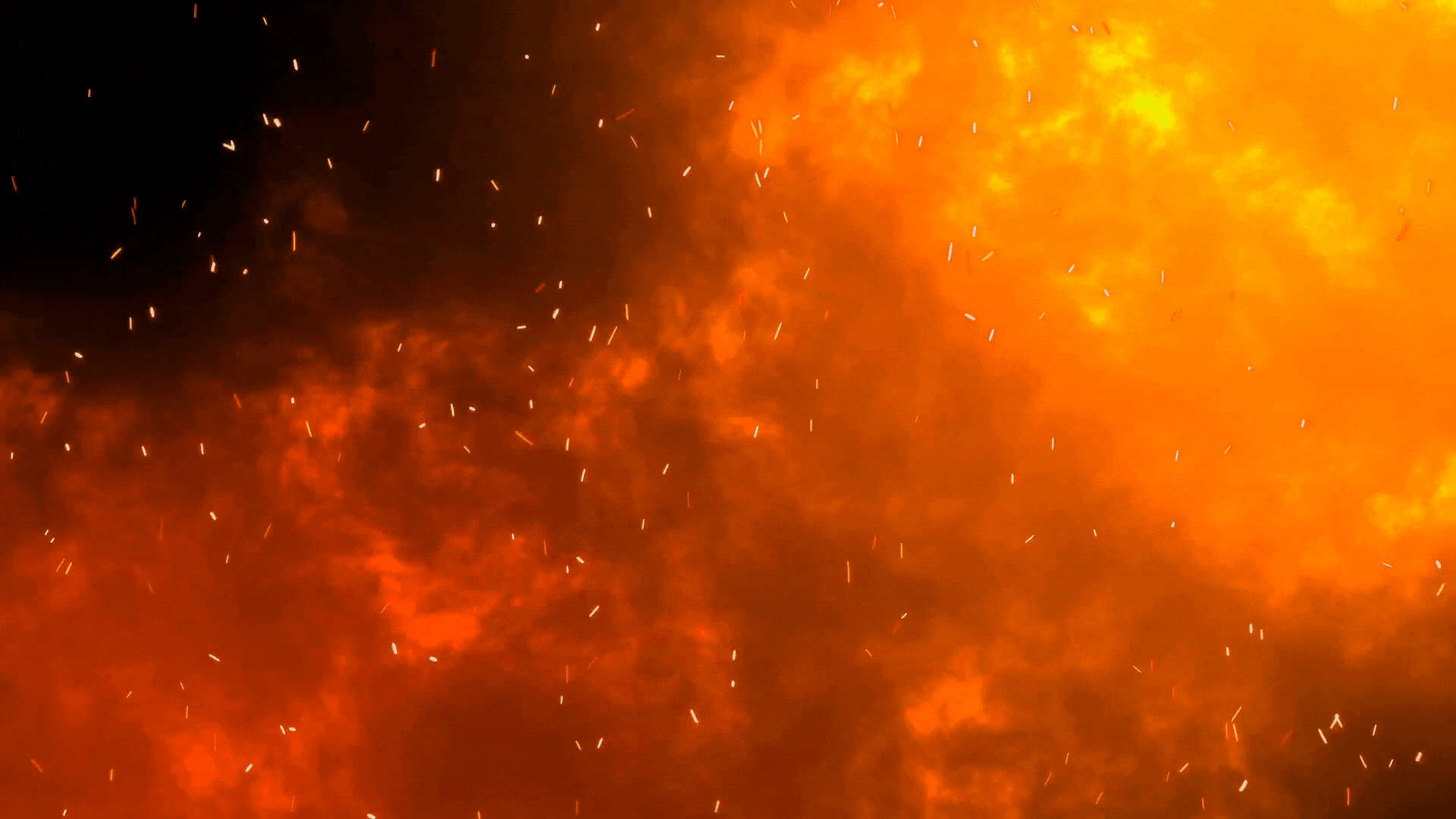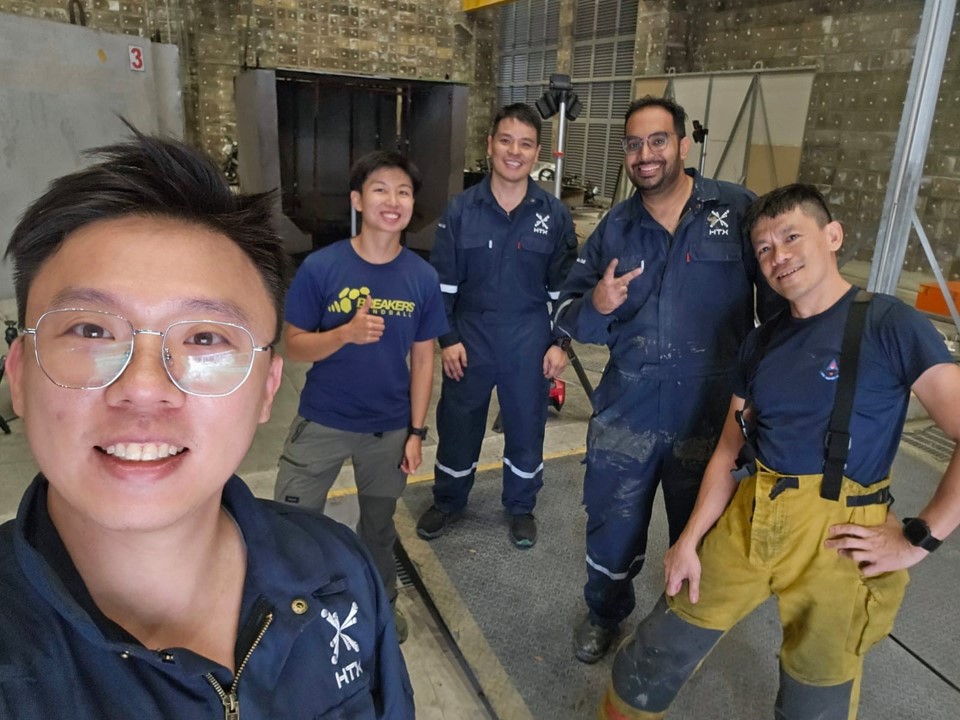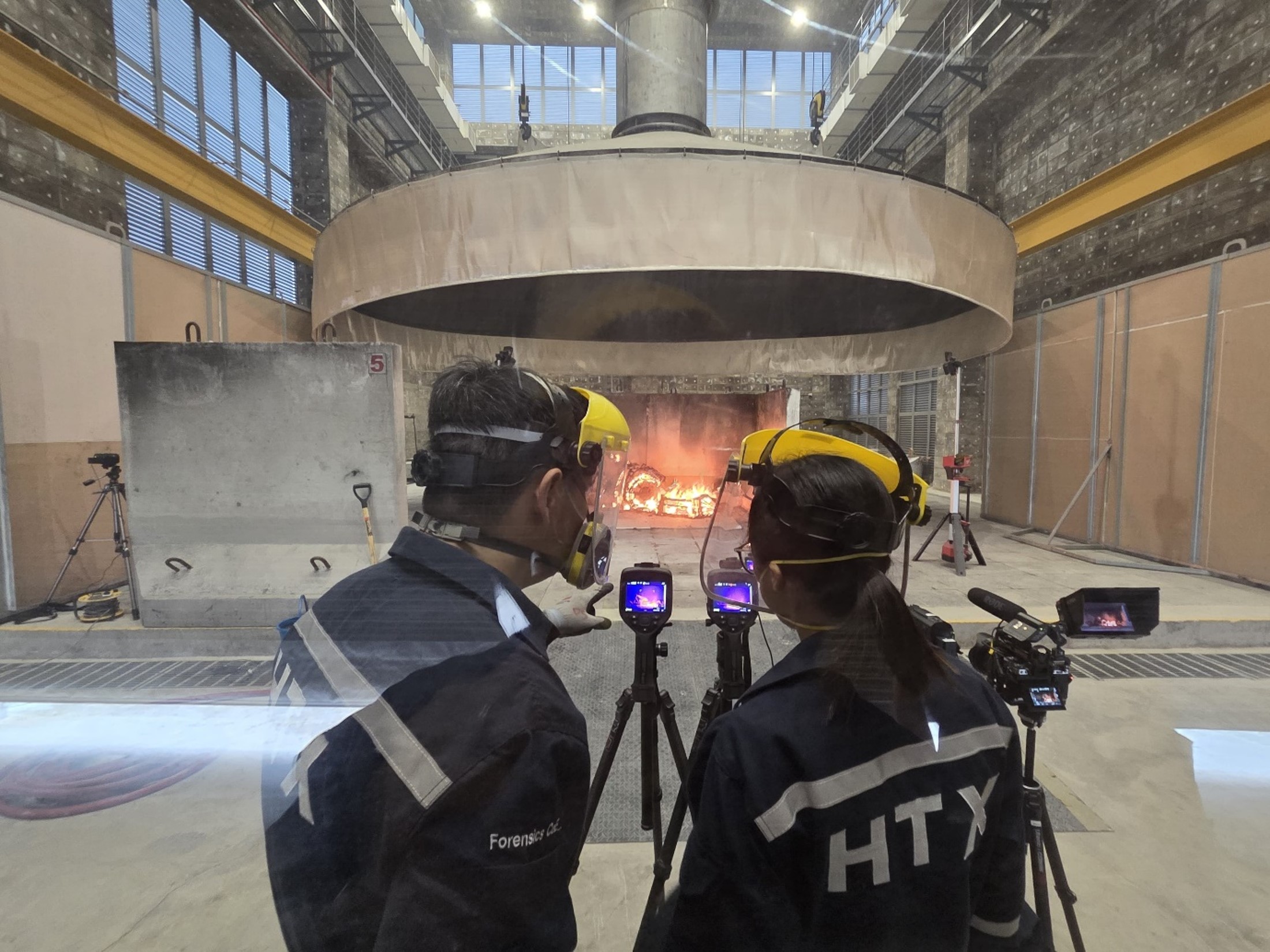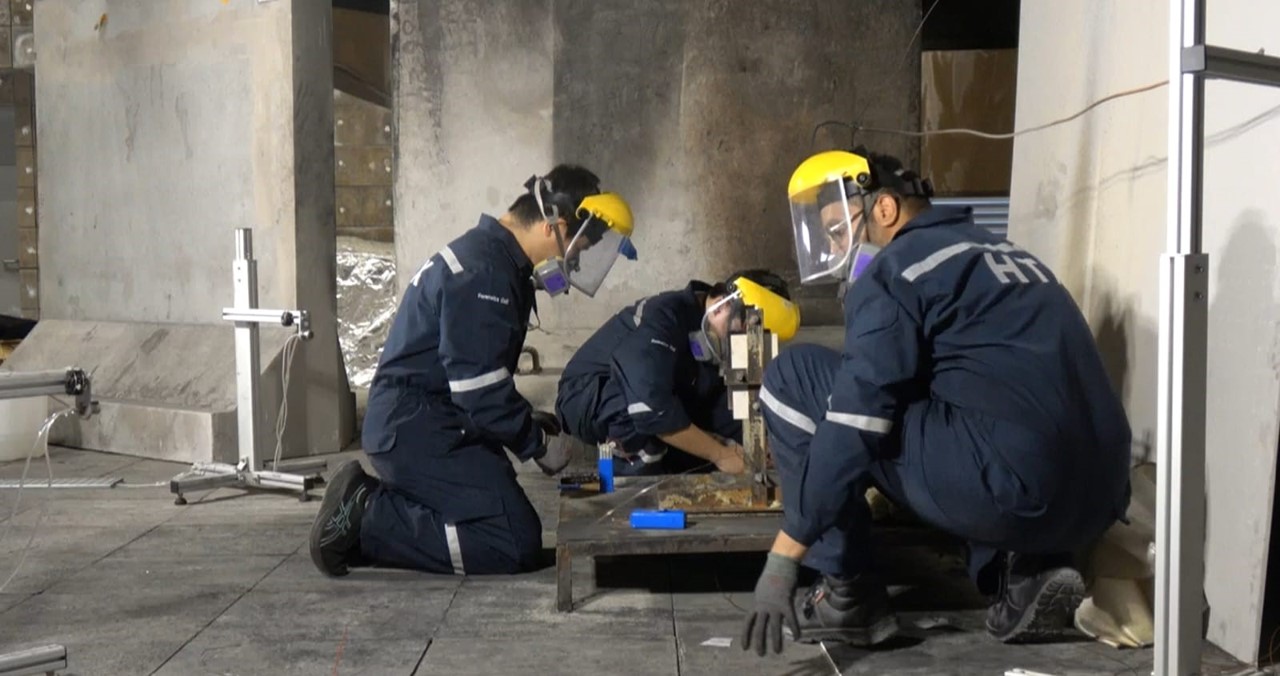
In March 2024, three stalls in a neighbourhood hawker centre went up in smoke and flames after a power-assisted bicycle (PAB) parked in the vicinity suddenly caught fire.
In fact, this incident occurred just less than four hours after a personal mobility aid (PMA) device that was charging in a residential flat ignited, engulfing the entire unit in a blaze.
Investigating fires
Fire incidents in Singapore are on a gradual rise, alongside the growing presence of energy-powered active mobility devices (AMDs) and electric vehicles (EVs). As such, getting to the bottom of fire incidents and uncovering their root causes are essential to prevent recurrences.
How is a fire investigation conducted? Well, the Singapore Civil Defence Force’s (SCDF) fire investigators employ a scientific approach that involves documenting and analysing burn patterns, collecting physical evidence for laboratory examination, and corroborating their findings with investigation leads such as CCTV footage and witness statements to establish both the origin and cause of the fire.
For highly complicated cases, HTX’s forensic scientists are called into action.
With their knowledge and expertise, the team from HTX’s Forensics Centre of Expertise (CoE) can assist in the interpretation of physical evidence on site, or reconstruction of fire scenes to help crack cases with unfamiliar parameters.
Beyond this, the team also conducts experiments that shed light on how fires originate, evolve and affect their surroundings so as to better understand the science behind it all and be in a position to apply that foundational understanding. This will help to enhance fire response, mitigation and suppression measures, investigations, as well as emergency response, fire risks and safety.
 Forensic Scientist Dr Dean Seah (left), and Senior Forensic Scientists Dr Edwin Ong (centre) and Dr Sheik Mohamed Anees (second from right), pose at the site of a burn experiment with their SCDF counterparts, Captain Joyce Ng (left) and Major Ho Sze Sien (right). (Photo: HTX/Dean Seah)
Forensic Scientist Dr Dean Seah (left), and Senior Forensic Scientists Dr Edwin Ong (centre) and Dr Sheik Mohamed Anees (second from right), pose at the site of a burn experiment with their SCDF counterparts, Captain Joyce Ng (left) and Major Ho Sze Sien (right). (Photo: HTX/Dean Seah)
Take for example fires involving lithium-ion batteries. Instead of simply studying the batteries’ properties and how they ignite, the team seeks to learn more about this topic by starting such fires.
Yes, our scientists literally set things like a personal mobility device (PMD) on fire during experiments!
“Through controlled burn experiments conducted with the SCDF at the Civil Defence Academy’s Fire Research Centre, HTX’s forensic scientists are able to simulate burn scenarios that mimic specific fire incidents, which then helps them form a better picture of how a case happened and developed,” explained Dr Dean Seah, a forensic scientist from the Forensics CoE.
Preventing fires
Besides post-fire investigations, the experiments are also conducted for the purpose of fire safety research.
Thanks to a 10-megawatts large-scale calorimeter – one of the region’s most powerful fire testing tools – HTX and SCDF get to study how fires behave, such as how quickly they spread, how hot they can get, the kinds of toxic gases that they release, and their impact on people and the surroundings.
 Dr Edwin Ong (left) and Forensic Scientist Clarice Lee (right) look at a thermal imaging camera to analyse the temperature of the environment as a PAB and sofa burn in an experiment. (Photo: HTX/Dean Seah)
Dr Edwin Ong (left) and Forensic Scientist Clarice Lee (right) look at a thermal imaging camera to analyse the temperature of the environment as a PAB and sofa burn in an experiment. (Photo: HTX/Dean Seah)
The data collected helps the teams better comprehend the risks associated with the fire source, such as lithium-ion batteries, which would then help to shape the development of fire safety strategies, emergency response guidelines and national fire codes.
The eventual goal? To keep our homes, transport systems and urban spaces safer.
“While fires cannot be fully eliminated, we focus on early detection, effective mitigation and resilient infrastructure to suppress fires quickly and minimise impact,” said Dean. “We strive to ensure our built environment is better prepared, more responsive and ultimately safer for all.”
Fighting fires
But the work doesn’t stop at understanding fires. HTX’s Forensics CoE also explores how to fight fires more effectively.
For instance, the team is far along their research on suppression methods, which has given them insights into how – contrary to popular belief – water can in fact be highly effective in extinguishing lithium-ion battery fires because of its ability to absorb large amounts of heat and thereby cool cells rapidly.
 (From left) Dr Edwin Ong, Dr Dean Seah and Dr Sheik Mohamed Anees set up a thermal runaway experiment to assess the most effective method of battery fire extinguishment. (Photo: HTX)
(From left) Dr Edwin Ong, Dr Dean Seah and Dr Sheik Mohamed Anees set up a thermal runaway experiment to assess the most effective method of battery fire extinguishment. (Photo: HTX)
Such scientific evidence uncovered in the CoE’s research supports the SCDF’s efforts to update fire operation strategies and enables firefighters to manage emerging energy risks more safely and effectively.
The CoE’s research findings in the areas of fire investigation, safety and operations are also shared at national workgroups and forums such as the Active Mobility Fire Safety Task Force, Electric Vehicle Battery Safety Task Force and Disposal of Lithium-Ion Batteries Waste workgroup.
A team effort
But it’s not just HTX’s Forensics CoE that’s involved in firefighting efforts. Take HTX’s Vehicle and Weapon Systems (VWS) CoE for example – to more effectively manage the risks that come with the Ministry of Home Affairs’ (MHA) pool of EV resources, VWS has been exploring the testing of sensors that detect early signs of thermal runaway in EV batteries, as well as researching minimum distance intervals between vehicles to curb the spread of any fire.
In addition, HTX’s Robotics, Automation and Unmanned Systems (RAUS) CoE have helped develop hi-tech machines that augment the firefighting process. Earlier this year in February, during a warehouse fire in Singapore’s Kranji estate, two such machines – the High Mobility Modular Machine (“H3M”) and Unmanned Firefighting Machine (“UFM3.0”) – were used to douse the flames.
The robots, which can be remotely operated and are able to transmit information such as thermal images, night vision and detector readings, were able to enter the highly dangerous environment to extinguish deep-seated pockets of fire, thus reducing the risk faced by SCDF’s firefighters.
Last but not least, HTX’s Civil Defence Programme Management Centre (CDPMC) helps the SCDF adopt and deploy such solutions.
So, as you can see, it really takes a village to put out a fire!
 The UFM3.0 (pictured), a firefighting robot delivered by HTX’s RAUS CoE and can be remotely operated to tackle large and dangerous fires, was deployed at a fire incident in Singapore’s Kranji estate. (Photo: SCDF)
The UFM3.0 (pictured), a firefighting robot delivered by HTX’s RAUS CoE and can be remotely operated to tackle large and dangerous fires, was deployed at a fire incident in Singapore’s Kranji estate. (Photo: SCDF)

